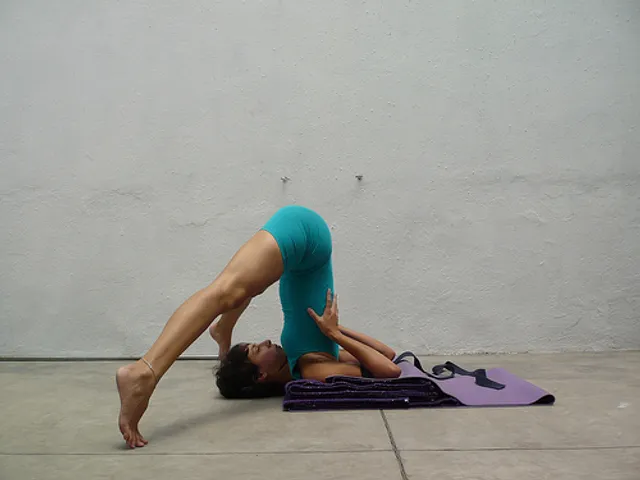
SALAMBA SARVANGASANA VARIATIONS
This sequence studies Salamba Sarvangasana and some of its hip opening variations.
“Salamba Sarvangasana is easy to learn but hard to master while Sirsasana is hard to learn and then easy to master.”
Salamba Sarvangasana is the mother of all asanas. Just as a mother strives to bring harmony and joy to the house, this asana tends to bring harmony and joy to the human organism. It is a panacea for most common ailments. In the organism there are a number of endocrine glands. Nourished by the blood, they secrete hormones that allow the proper functioning of the body and brain and affect their development and balance. If the functioning of these glands is not ensured, the hormones are not produced as they should and the body begins to degenerate. Astonishing as it may seem, many asanas have a direct effect on the glands and stimulate them. Sarvangasana provides this direct effect on the thyroid and parathyroid glands which are located in the neck and which benefit from a better irrigation thanks to the blocking of the chin. In addition, since the body is in an inverted position, the venous circulation that brings blood to the heart is effortless, thanks to gravity. This allows new blood to flow into the neck and chest. As a result, people suffering from shortness of breath, palpitation, asthma, bronchitis and sore throat find relief. Because the head remains in this inverted position and the blocking of the chin provides it with good blood circulation, the nerves are soothed and even chronic headaches disappear.
Regular practice of this asana removes common colds and other nasal disturbances. Thanks to its calming effect on the nerves, the posture calms those who suffer from hypertension, insomnia or nervous breakdown. The reversal of gravity also has an effect on the abdominal organs by facilitating bowel movements, which makes constipation disappear. The body is thus rid of toxins and one feels full of energy. This asana is recommended for urinary and menstrual disorders, displacement of the uterus, hemorrhoids and hernia. It also helps relieve people who suffer from epilepsy, lack of vitality and anemia. It is no exaggeration to say that if a person regularly practices this posture, he feels new strength and ardor and feels happy and confident. A new life will flow into her, her spirit will be at peace and she will experience the joy of living.
Variations of Sarvangasana activate the abdominal organs and provide relief to people suffering from stomach or intestinal ulcers, colitis or severe stomach aches.
The ideal is to stay in Sarvangasana between 5 to 10 minutes and practice the variations for 20 to 30 seconds on each side with the exception of Halasana which can be maintained for 3 to 5 minutes.
|| : postures to be added only for 90-minute classes
|| : postures only for advanced practitioners
Siddhasana for the song of the Oms
ADHO MUKHA VIRASANA
BIDALASANA ➞ MARJARIASANA 4x
➞ ADHO MUKHA SVANASANA
- 4x spine undulation
➞ ADHO MUKHA SVANASANA 3 legs (R/L)
- knees bent at hip opening
- place the foot inside the hands
➞ ANJANEYASANA
- looking forward / towards the back foot 3x
➞ SIMPLE TWIST
|| ➞ FULL TWIST
➞ ADHO MUKHA SVANASANA
➞ ARDHA UTTANASANA hands on hips to straighten up
TADASANA
Access the annotated class sequence with posture images and join the community of teachers!